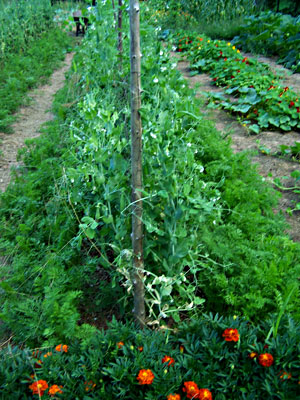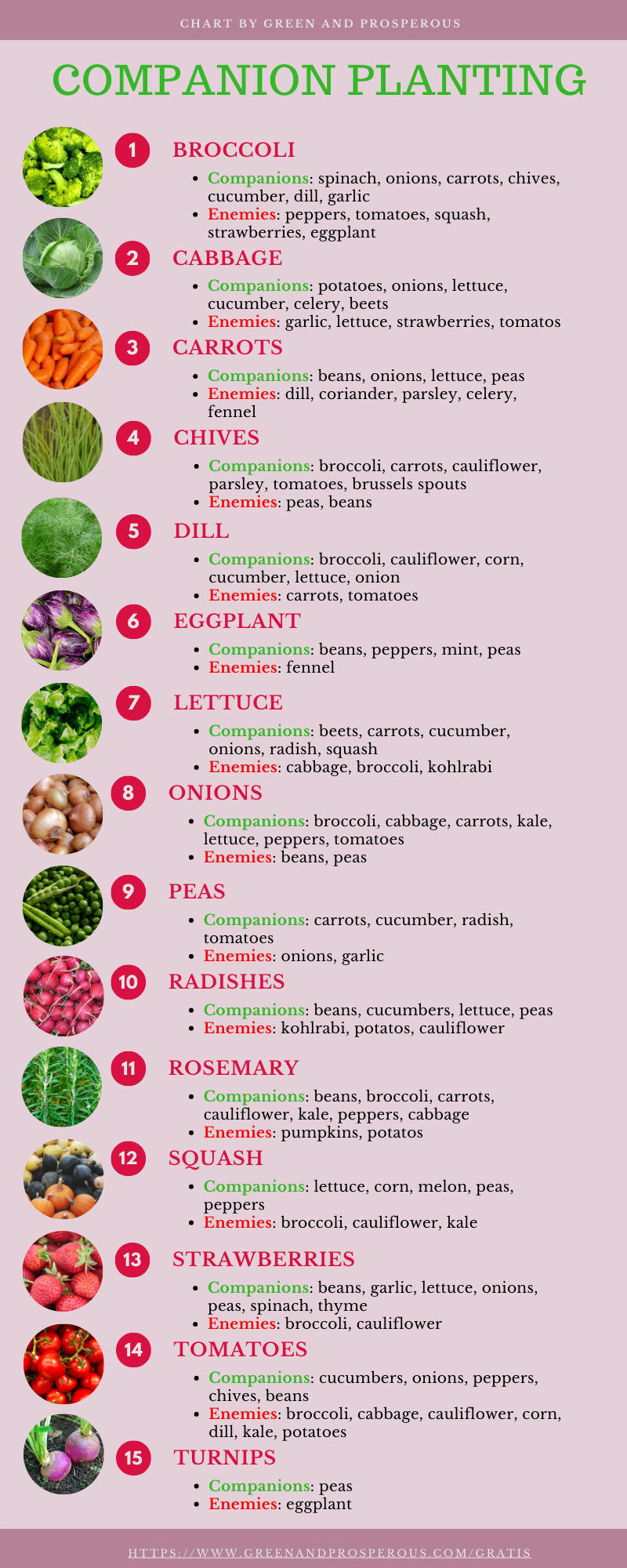The Ultimate Guide To Intercropping Vegetables: A Charted
The Ultimate Guide to Intercropping Vegetables: A Charted
Introduction
Intercropping is the practice of growing two or more crops in close proximity. It has been practiced for centuries by farmers around the world, and there are many benefits to doing so.
For one, intercropping can help to improve soil health. Different plants have different root systems, and they can help to break up compacted soil, aerate the soil, and improve drainage. This can lead to healthier plants and higher yields.
Intercropping can also help to reduce pests and diseases. Some plants can repel pests, while others can attract beneficial insects. For example, marigolds are known to repel nematodes, while nasturtiums attract ladybugs.
Finally, intercropping can help to extend the harvest season. By planting different crops with different maturity dates, you can have fresh vegetables from your garden all season long.
In this guide, we will discuss the benefits of intercropping, how to do it, and some of the best companion plants for vegetables. We will also provide a chart that you can use to plan your intercropping garden.
Benefits of Intercropping
As mentioned above, there are many benefits to intercropping. Here are some of the most important:
- Improved soil health
- Reduced pests and diseases
- Extended harvest season
- Increased yields
- Increased biodiversity
- Reduced workload
How to Intercrop
There are a few things to keep in mind when intercropping. First, you need to choose the right companion plants. There are many resources available online and in libraries that can help you with this.
Once you have chosen your companion plants, you need to decide how you are going to space them. The spacing will depend on the size of the plants and how much room they need to grow.
You also need to consider the timing of your planting. Some plants mature faster than others, so you need to make sure that you plant them at the right time so that they will all be ready to harvest at the same time.
Companion Plants for Vegetables
Here is a list of some of the best companion plants for vegetables:
- Beans and corn: Beans fix nitrogen in the soil, which benefits the corn. The corn provides shade for the beans, which helps to keep them cool.

- Carrots and onions: Carrots help to repel onion maggots, while onions help to repel carrot flies.

- Cucumbers and melons: Cucumbers and melons help to attract beneficial insects, such as ladybugs and lacewings.

- Herbs and tomatoes: Herbs, such as basil, mint, and rosemary, help to repel pests and diseases from tomatoes.
- Lettuce and radishes: Lettuce and radishes mature quickly, so you can plant them together and then remove the radishes when they are ready to harvest, leaving the lettuce to continue growing.

- Peas and spinach: Peas fix nitrogen in the soil, which benefits the spinach. The spinach helps to suppress weeds.

Charted
Here is a chart that you can use to plan your intercropping garden:
| Vegetable | Companion Plants |
|---|---|
| Beans | Corn, peas, squash, tomatoes |
| Carrots | Onions, lettuce, radishes |
| Cucumbers | Melons, beans, squash |
| Herbs | Tomatoes, peppers, carrots |
| Lettuce | Radishes, peas, spinach |
| Melons | Cucumbers, beans, squash |
| Peas | Spinach, beans, carrots |
| Peppers | Tomatoes, herbs, lettuce |
| Potatoes | Beans, tomatoes, corn |
| Spinach | Lettuce, radishes, peas |
| Squash | Melons, cucumbers, beans |
| Tomatoes | Herbs, peppers, lettuce |
Conclusion
Intercropping is a great way to improve the health of your soil, reduce pests and diseases, and extend your harvest season. It is also a great way to increase biodiversity in your garden.
If you are new to intercropping, start small and experiment with different combinations of plants. With a little trial and error, you will soon be able to create a thriving intercropping garden that will provide you with fresh vegetables all season long.
Intercropping vegetables is a great way to boost your yields and improve the health of your garden. By planting different types of vegetables together, you can create a symbiotic relationship where each plant benefits the other. For example, some plants can attract beneficial insects that help to control pests, while others can improve the soil quality or provide shade.
If you're interested in learning more about intercropping vegetables, I recommend visiting Garden Wiki. This website has a comprehensive chart of intercropping vegetables, as well as tips on how to get started.
Here are some of the benefits of intercropping vegetables:
- Increased yields: Intercropping can help to increase your yields by up to 30%.
- Improved soil quality: Intercropping can help to improve the soil quality by breaking up compacted soil, adding organic matter, and attracting beneficial insects.
- Reduced pests and diseases: Intercropping can help to reduce pests and diseases by attracting beneficial insects and repelling harmful ones.
- Enhanced pollination: Intercropping can help to enhance pollination by providing a variety of pollen and nectar sources for pollinators.
If you're ready to start intercropping vegetables, here are a few tips:
- Choose compatible plants: Not all plants are compatible with each other. Do some research to make sure that the plants you're planning to intercrop will get along.
- Plant in blocks: Instead of planting rows of vegetables, plant them in blocks. This will help to create a more diverse ecosystem and attract more beneficial insects.
- Space plants properly: Make sure to space your plants properly so that they have enough room to grow.
- Mulch: Mulching can help to suppress weeds and retain moisture, which will benefit all of your plants.
I hope this information has inspired you to try intercropping vegetables in your garden. For more information, be sure to visit Garden Wiki.
FAQ of intercropping vegetables chart
Q: What is intercropping?
A: Intercropping is a cropping system in which two or more crops are grown in close proximity to each other. This can be done in a single row, in a checkerboard pattern, or in a more complex design.
Q: What are the benefits of intercropping vegetables?
A: There are many benefits to intercropping vegetables, including:
- Increased crop yields
- Improved soil health
- Reduced pest and disease pressure
- Increased biodiversity
- Enhanced pollination
- Improved landscape aesthetics
Q: What are some of the most common intercropping vegetable combinations?
A: Some of the most common intercropping vegetable combinations include:
- Beans and corn
- Cucumbers and melons
- Lettuce and carrots
- Peas and potatoes
- Spinach and radishes
Q: How do I create an intercropping vegetable chart?
A: To create an intercropping vegetable chart, you will need to consider the following factors:
- The growth habits of the different vegetables
- The nutrient requirements of the different vegetables
- The pest and disease resistance of the different vegetables
- The desired yield of the different vegetables
Once you have considered these factors, you can start to create your chart. There are many different ways to create an intercropping vegetable chart, so you can use the method that works best for you.
Q: Where can I find a intercropping vegetable chart?
A: There are many resources available online and in libraries that can help you find an intercropping vegetable chart. You can also ask your local nursery or garden center for recommendations.
Image of intercropping vegetables chart
- Image 1: This chart shows a variety of vegetables that can be intercropped together. The vegetables are grouped by their height and whether they are shade-tolerant or not.
- Image 2: This chart shows a more detailed look at how different vegetables can be intercropped together. The vegetables are grouped by their growth habit and their nutrient requirements.
- Image 3: This chart shows a list of vegetables that can be intercropped together, along with their benefits. The benefits include increased yields, pest control, and improved soil health.
- Image 4: This chart shows a seasonal guide to intercropping vegetables. The chart shows which vegetables can be intercropped together during different seasons.

- Image 5: This chart shows a step-by-step guide to intercropping vegetables. The chart includes tips on how to choose the right vegetables, how to plant them, and how to care for them.


Post a Comment for "The Ultimate Guide To Intercropping Vegetables: A Charted"